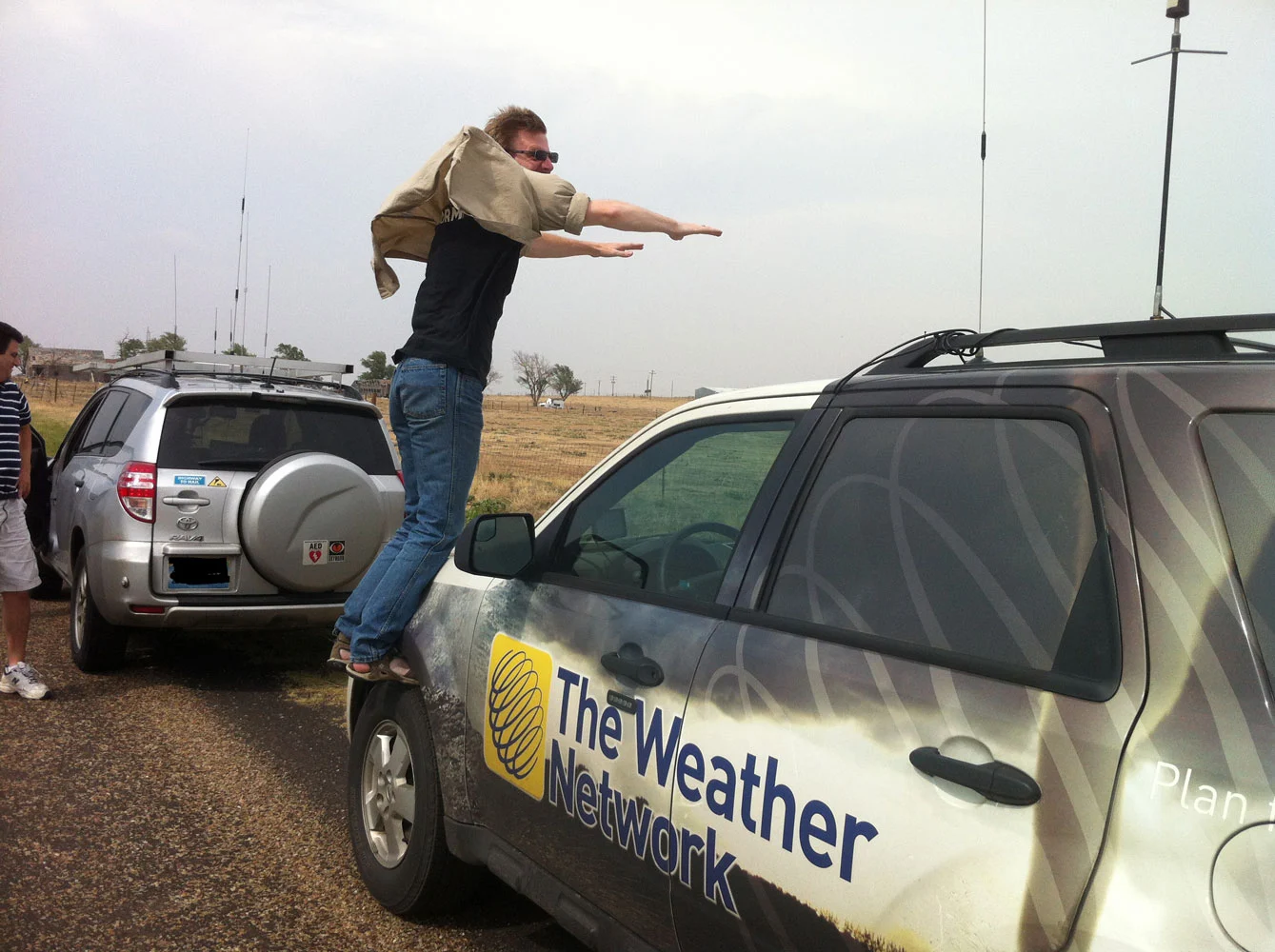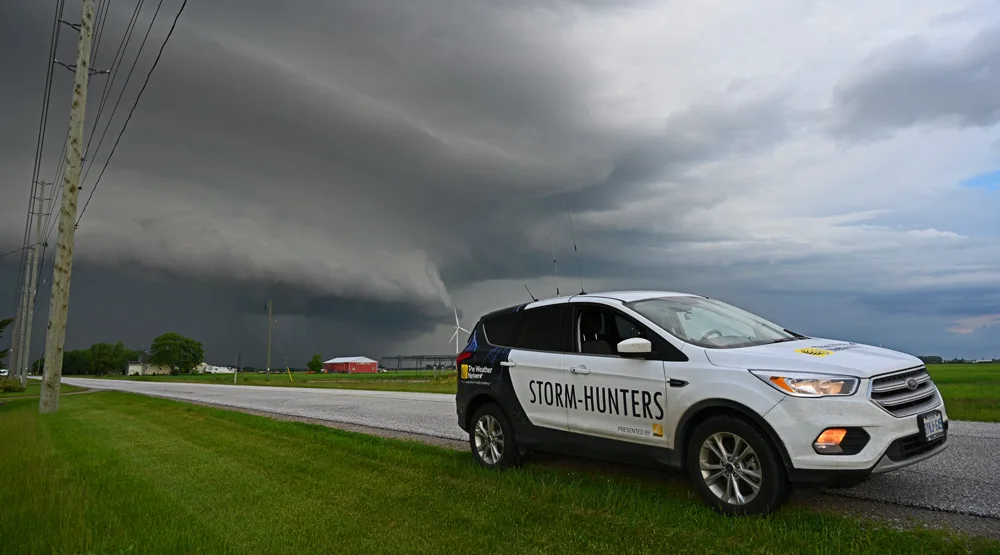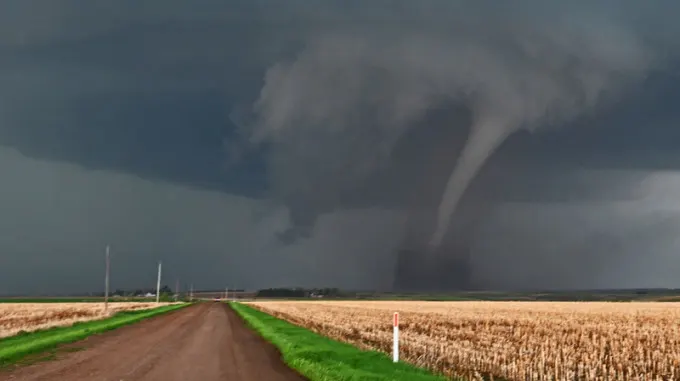
How storm chasers safely weather the whirlwind of COVID-19 restrictions
With travel and physical distancing restrictions during the COVID-19 pandemic, how will this affect the 2020 storm-chasing season?
Storm chasing is a dangerous profession, even during the best of times. But add in the current COVID-19 pandemic, with the physical distancing and quarantine measures in place, it can be much riskier for the chasers and possibly public safety.
The timing of the outbreak couldn’t have happened at a worse time for storm chasers, as severe weather has already ramped up in the southern states. And no one knows for sure when the restrictions could be lifted, so the effects could last well into the summer months.
This spring has been quite impactful stateside, with fatalities exceeding more than four dozen already – likely making 2020 the deadliest year for tornadoes since 2012.
RELATED: Chasing tornadoes comes down to balancing science with safety
The Weather Network's (TWN) veteran Storm Hunter and meteorologist Mark Robinson shed a light recently on some of the current challenges that are facing storm chasers amid the pandemic.

Storm Hunters in action. Photo: Mark Robinson.
SPOTTERS VERSUS CHASERS
Among one of the concerns was over public safety and impacts to forecasting this season due to a lack of storm chasers in the field. Robinson said it is "tricky" to answer that because boils down to spotters versus chasers. It is an issue that has already been discussed upon at great lengths in the storm-chasing community.
"Chasing is, by its nature, a long-distance endeavour. That means crossing state, provincial and even country borders. That means that chasers may run afoul of shelter-in-place laws, but they can follow a storm and report on what they’re seeing as the storm moves," said Robinson.

Tornado captured in Nebraska in 2019. Photo: Mark Robinson.
The storm chaser was quick to point out that because spotters prefer to stay in one place to report what they see, they won’t encounter any travelling or distancing restrictions. However, they won’t be able to follow a storm to track its real-time progress, either.
As an example, an experienced storm chaser reviewed thoroughly to see who was more efficient at informing weather services – spotters or chasers. Robinson recounted how his findings, “although very anecdotal,” showed that spotters, by far, were better for getting the information to the authorities.
“Despite more than a dozen chasers being on a severe, tornado-warned storm, not one of them called the U.S. National Weather Service (NWS) about the storm. The information came from the spotters who were in the area," said Robinson.
This is likely due to the nature of chasing, he said, as it’s "very difficult to watch a storm, drive and film all at the same time." "Calling Environment Canada or the NWS is not high on the list of priorities," said Robinson.
The meteorologist also recalled his own attempt at solving the problem by running a live video stream to TWN while describing “what I’m seeing at the same time.” He admits, however, this is not the greatest solution as it requires someone in the office (or in their home) has to be watching and interpreting what they see.
“Nevermind how busy everyone is at any given moment at TWN. Even worse, with the COVID-19 issue making things that much more complicated, it means it falls back to me to inform Environment Canada what I’m seeing,” said Robinson. “That means that we must rely on spotters who can more easily inform Environment Canada or the NWS as to what is going on.”
IS CHASING AN ESSENTIAL SERVICE?
With the current travel restrictions within the U.S., which can vary state-by-state, there is a significant debate among the chasing community about whether it is considered to be an essential service, therefore would be permitted under the guidelines.
SEE ALSO: Want to be a storm chaser? Here's what you need to know
Robinson says some chasers argue in favour of chasing being essential, as they are mostly on their own, in their own vehicles and can ensure they don’t interact with the general public. Others, on the other hand, argue against it because they still need to get gas, food and may sometimes need use hotels, requiring them to have contact with people.
“They also point out that many small towns have not yet encountered COVID-19, and if chasers are coming from a far distance, they could easily be infected and would be bringing a virulent disease into a community that is no way able to deal with an outbreak,” added Robinson.
“Still others have used the argument that it’s their right to do whatever they want and that government mandates do not apply to them.”
No matter what side of the argument you side with, the discussion continues. Given the current COVID-19 developments, “we will soon see what happens when Tornado Alley, and then Canada, becomes active in May through August,” the meteorologist said.
EFFECTIVENESS OF WARNINGS
Alerts are issued by the National Weather Service in the U.S. and Environment Canada, here. They are predominantly based on radar and satellite imagery, not as much on spotter and chaser reports, according to Robinson.
However, he points out that “ground-truthing” – having someone witness what the storm is doing on the ground – is an important part of confirming validity of the warning. "I’ve had at least one unexpected tornado happen with no warning at all and my observations led to a warning being put out as fast as EC (Environment Canada) was able," Robinson recalled.
Because of that aspect, he isn't concerned about less chasers in the field having an impact on warnings. What Robinson is worried about is Environment Canada’s effectiveness being impacted by difficulties in getting staff to the various offices, as well as the possibility of their "inability to easily conference with their colleagues."
POSSIBLE DECREASE IN NUMBER OF TORNADOES REPORTED
While tornado reports aren’t likely to be significantly impacted by a reduced number of chasers, the quantity of them conveyed back to weather agencies could be a problem.
Robinson noted that tornadoes typically track through areas with smaller populations and less properties, therefore, it’s not as critical to the alerting process that saves lives to report every single tornado that doesn’t threaten inhabited areas.
"The problem with an area like Ontario is that there are very few areas that don’t have people. In addition, many of the storms that produce tornadoes here are high precipitation events in which the tornado can be hard to spot," said Robinson.
HOW WILL COVID-19 AFFECT TORNADO SURVEYS?
It isn’t just the storm chasers who may have to dodge obstacles while doing their job, the people responsible for surveying tornado damage to determine its rating will encounter some challenges along the way. Robinson noted the surveys often require teams of people working in close proximity to one another, so there will be an impact due to the physical distancing measures.
To get a better idea of how much affect there will be, the Storm Hunter recently spoke with Greg Kopp, head of the engineering department at Western University, on how COVID-19 distancing restrictions will impact tornado surveys.
Typically, in the wake of an event with significant structural damage, Kopp noted teams of two to six , depending on the aftermath severity, are assembled to survey the scene. They then attempt to identity damage for every structure, to “really capture the data.”
The university is closed due to COVID-19, so Kopp and other surveyors have to get special permission before attending a damage scene. Also, each person on the team has to travel in their own vehicle in order to comply with distancing restrictions. They will then use drones to fly over the damaged area to record the data through photographs.
“It will be a completely remodelled sensing operation at this point in time. We won’t be doing any (of the) usual talking to people, finding out things. We will try to go find the damage and use the drones to work out (what) the path actually is,” said Kopp.
Due to the pandemic, the surveyors lose the ability to examine some critical parts of the damage including inspecting and measuring the nails, Kopp said.
“We won’t be able to do things like that if there is a major event and there are roofs off houses and things like that. We won’t be able to capture those details, which will increase the uncertainty on our damage level assessments because we rely on that from an engineer perspective,” said Koop.
Thumbnail courtesy of Mark Robinson.
